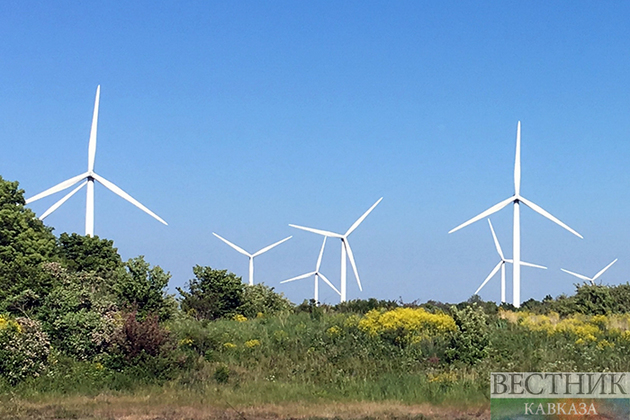Europe is no longer the epicenter of clean energy investments after losing that spot to China. Bloomberg New Energy Finance: $1.1 trillion was invested in clean energy in 2022.
The crisis in Ukraine triggered a global energy crisis and temporarily shifted the world’s attention from renewable energy and more to fossil fuels. Tight oil and gas markets during the first half of 2022 led to record prices for both commodities, with dozens of governments walking back on their carbon pledges as they turned to ‘dirty’ fuels like coal and even controversial ones like nuclear energy, Oil Price writes.
Energy transition
But behind the scenes, the clean energy wheel kept turning, with Bloomberg New Energy Finance (BNEF) reporting that an impressive $1.1 trillion flowed into the sector in 2022. BNEF says that almost every sector hit record levels of investment in 2022, including renewable energy, energy storage, hydrogen, carbon capture and storage (CCS), electrified transport, electrified heat and sustainable materials.
Renewable energy, including wind, solar and biofuels, received the lion’s share of investments at $495 billion, good for 17% Y/Y growth. Electrified transport, including electric vehicles and associated infrastructure, was a close second with the sub-sector receiving $466 billion, up 54% year-on-year. Another encouraging trend: although the hydrogen sector received the least financial commitment at just $1.1 billion, it remains the fastest-growing sector with investment more than tripling thanks to strong interest from the private sector and growing policy support.
Investments shift
However, there’s been a seismic shift in investment trends with Europe no longer the epicenter of clean energy investments after losing that spot to China. Indeed, BNEF says that China spent $546 billion on renewables in 2022, more than triple the European Union’s total spend at $180 billion, and the United States’ $141 billion. Germany retained its third place; France climbed to fourth while the UK dropped one place to fifth.
Renewables now cheaper than fossil fuels
There are several reasons why the renewable energy sector continues to grow like a weed. First off, earlier in the year, the International Energy Agency (IEA) predicted that the Ukraine crisis is likely to accelerate the world’s transition to greener energy from fossil fuels. “Energy markets and policies have changed as a result of the situation in Ukraine, not just for the time being, but for decades to come. The energy world is shifting dramatically before our eyes. Government responses around the world promise to make this a historic and definitive turning point towards a cleaner, more affordable and more secure energy system,” Fatih Birol, executive director of the agency, said in the organization’s annual World Energy Outlook report. IEA has projected that global clean energy investments will nearly double to $2 trillion by 2030.
But there’s an even bigger reason why renewable energy has gained a new allure: renewable fuels are considerably cheaper than fossil fuels, especially oil and coal.
In its lowest Energy Cost Report, Energy Intelligence’s senior reporter Philippe Roos has analyzed the cost of generating electricity, also known as levelized cost of energy (LCOE), of conventional and renewable forms of electricity generation in five regions: the U.S., Western Europe, Japan, the Mideast and developing Asia. The data, which also include break-even prices for oil, gas and coal in the Mideast and developing Asia, is based on Energy Intelligence’s proprietary LCOE model.
The EI study reveals that the race for lowest cost remains mostly between solar photovoltaic (PV) and onshore wind. This trend rings true even in Japan, where the scarcity of real estate handicaps land-intensive renewables, onshore wind beats coal and PV displaces gas. According to the LCOE report, “wind and PV generation costs remain lower than fossil fuel alternatives, especially with current high oil and coal prices”, and with supply chain issues troubling both sectors equally, renewable technologies are still the cheapest.
Coal
That said, the coal sector has also been winning big time. According to a report by the Observer Research Foundation, energy supply disruptions triggered by the crisis in Ukraine left coal as the only option for dispatchable and affordable power in much of Europe, including the tough markets of Western Europe and North America that have explicit policies to phase out coal.
According to the Washington Post, coal mines and power plants that closed 10 years ago have begun to be repaired in Germany. In what industry observers have dubbed a “spring” for Germany’s coal-fired power plants, the country is expected to burn at least 100,000 tons of coal per month by winter. That’s a big U-turn considering that Germany's goal had been to phase out all coal-generated electricity by 2038. Other European countries such as Austria, Poland, the Netherlands and Greece have also started restarting coal plants while coal demand in China has been surging.
Meanwhile, the energy crisis has prompted dozens of governments to rethink the policy of phasing out nuclear power. Vestnik Kavkaza reported earlier that Germany and Japan have been extending the lives of their existing nuclear plants and more influential world leaders in the West are now getting on board with Russia and China, signaling a potential sea change for the nuclear power industry.






